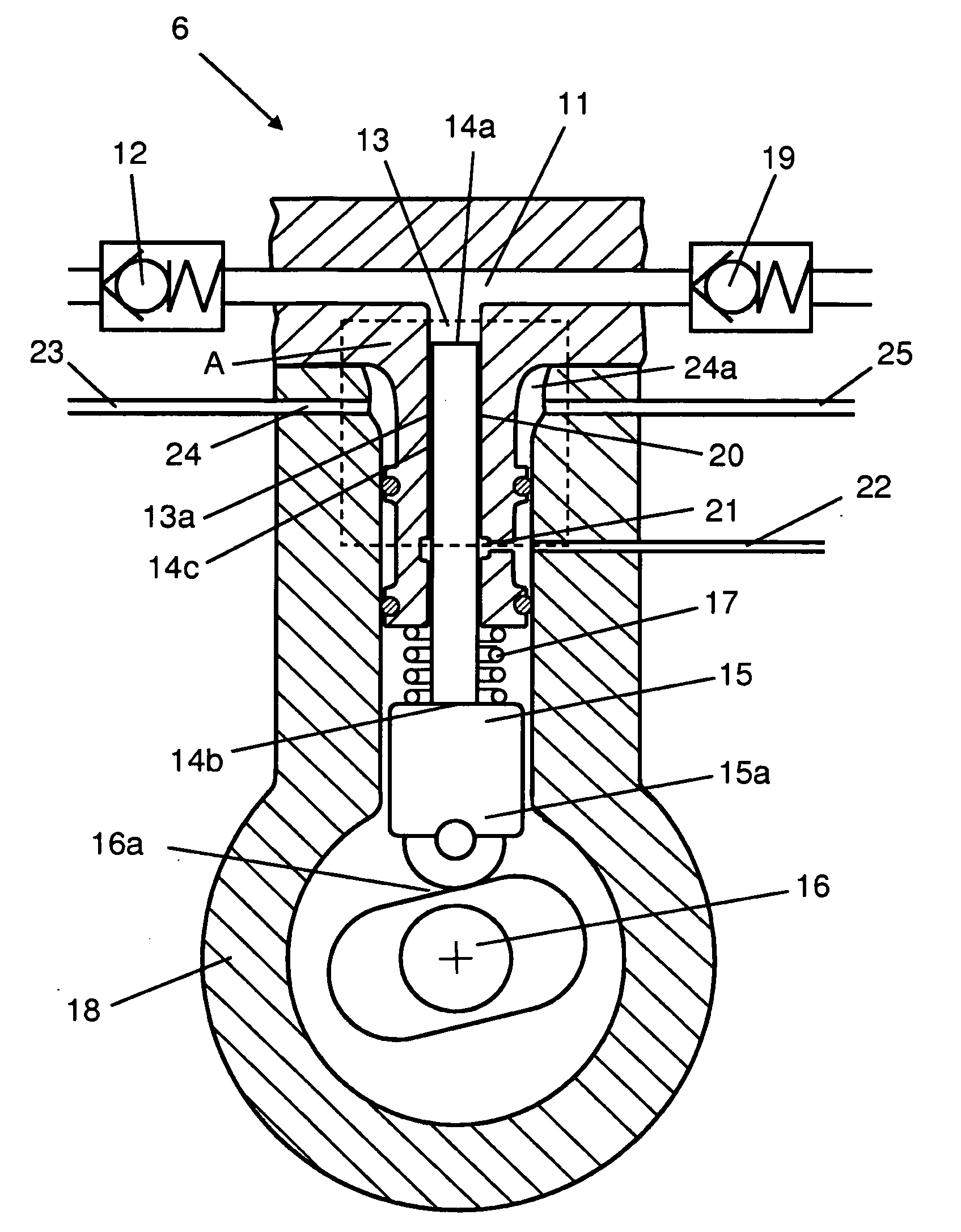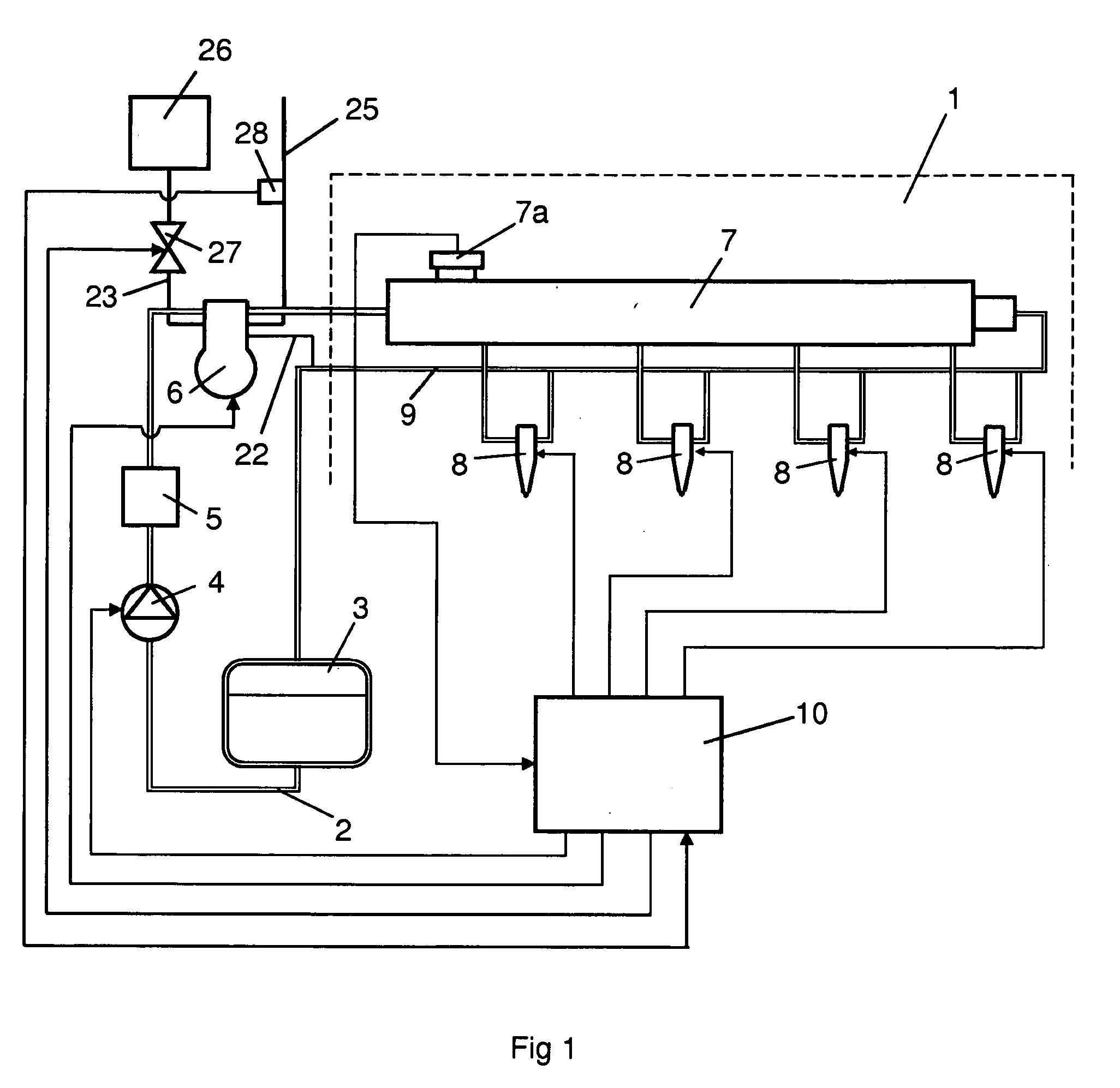Fuel pump device
a fuel pump and pump body technology, applied in the direction of liquid fuel engines, machines/engines, positive displacement liquid engines, etc., can solve the problems of certain fuel leakage, increased fuel leakage between pistons and cylinders, and fuel leakage itself, so as to reduce the level of fuel leakage flow, simple design, and high efficiency
- Summary
- Abstract
- Description
- Claims
- Application Information
AI Technical Summary
Benefits of technology
Problems solved by technology
Method used
Image
Examples
Embodiment Construction
[0014]FIG. 1 depicts an injection system for injecting fuel at a very high pressure in a combustion engine here exemplified as a diesel engine 1. Injecting the fuel at a very high pressure may reduce discharges of emissions from the diesel engine 1. The injection system and the diesel engine 1 may be fitted in a heavy vehicle. The injection system comprises a fuel line 2 for supplying fuel from a fuel tank 3 to the respective cylinders of the diesel engine 1. A first fuel pump 4 is arranged in the fuel line 2 to transfer fuel from the fuel tank 3 to a high-pressure pump 6 via a filter 5. The high-pressure pump 6 is adapted to pressurising the fuel so that it enters at a high pressure an accumulator tank 7 which takes the form of a so-called “Common Rail”. Injection means 8 are arranged at each of the connections between the accumulator tank 7 and the respective cylinders of the diesel engine 1. A return line 9 is adapted to leading fuel not burnt in the diesel engine 1 back to the f...
PUM
 Login to View More
Login to View More Abstract
Description
Claims
Application Information
 Login to View More
Login to View More - R&D
- Intellectual Property
- Life Sciences
- Materials
- Tech Scout
- Unparalleled Data Quality
- Higher Quality Content
- 60% Fewer Hallucinations
Browse by: Latest US Patents, China's latest patents, Technical Efficacy Thesaurus, Application Domain, Technology Topic, Popular Technical Reports.
© 2025 PatSnap. All rights reserved.Legal|Privacy policy|Modern Slavery Act Transparency Statement|Sitemap|About US| Contact US: help@patsnap.com



